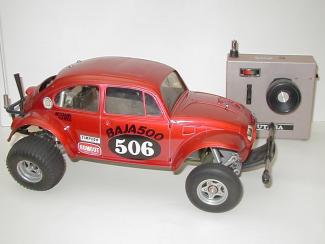

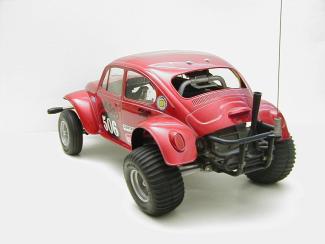
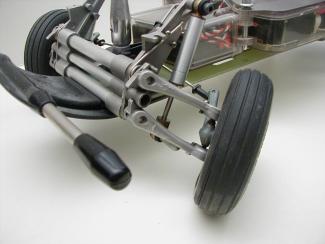
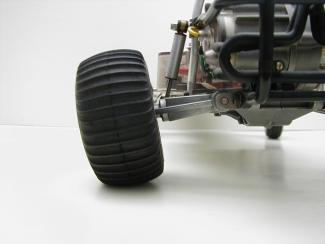
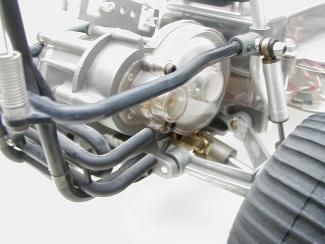
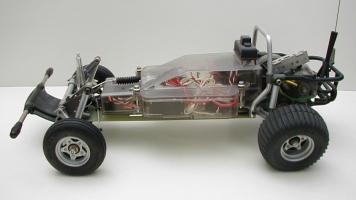
Tamiya Sand Scorcher
 |
Flashback to the 80's- Immaculate example of a near completed Sand Scorcher with era correct competition radio. Car has only been ran on carpet. Body of this model have several external pieces that has not been assembled. The Sand Scorcher is the most classic of R/C cars. This is the car that started the R/C car craze that lasted until the 90's when participation tapered off. The car had life like working suspension and a waterproof radio box. Cars prior to the Sand Scorcher had suspension like the XR311, but they were fragile, and had poor performance without a shock or any type of friction damping. It was more of a curiosity than a true working suspension. The mechanisms of the Sand Scorcher was very imaginative, and it hit the market right on, giving the hobbiest exactly what they wanted. It was pushing the envelope of practical miniturization in the hobby world. |
 |
The side is the most attractive view of the model. The outdated style of the VW body even by then standard is quite a contrast to the sophisticated mechanisms in the kit. The highly lifted vehicle with long suspension travel can be clearly seen by the amount of space between the tires and the wheel well. Under full compression, the wheels will travel high enough to rub the fenders a little at the top. |
 |
Another nice view of the model is the back quarter view. The fake tail pipe adds an interesting touch. The tail pipe along with the all metal gearbox does give it the illusion that the vehicle is gas powered. |
 |
The front suspension is a working replica of the real VW suspension. The ball joints tend to be the weakest point on the model. After a crash, it would often come out. The shafts that the swing arm pivot on can also get bent slightly in a severe crash, but it does not affect operation of the car. The rest of the suspension is near bullet proof. |
 |
The rear suspension is a simple swing arm assembly. This replicates the way that the early VW bug's infamous rear suspension works. Suspension is sprung by a torsion bar just like in the VW except it is oriented logitudinally rather than transversely as in he VW. Like the VW, suspension go through large chamber change as it cycles through its range. As seen in the picture, in the normal state, wheels are pointed down in positive chamber. Under full compression, it is in negative chamber. |
 |
A large oversized brass u-joint is used to transmit power to the wheels. |
 |
Radio gear are housed in a semi sealed box with cam locks. |